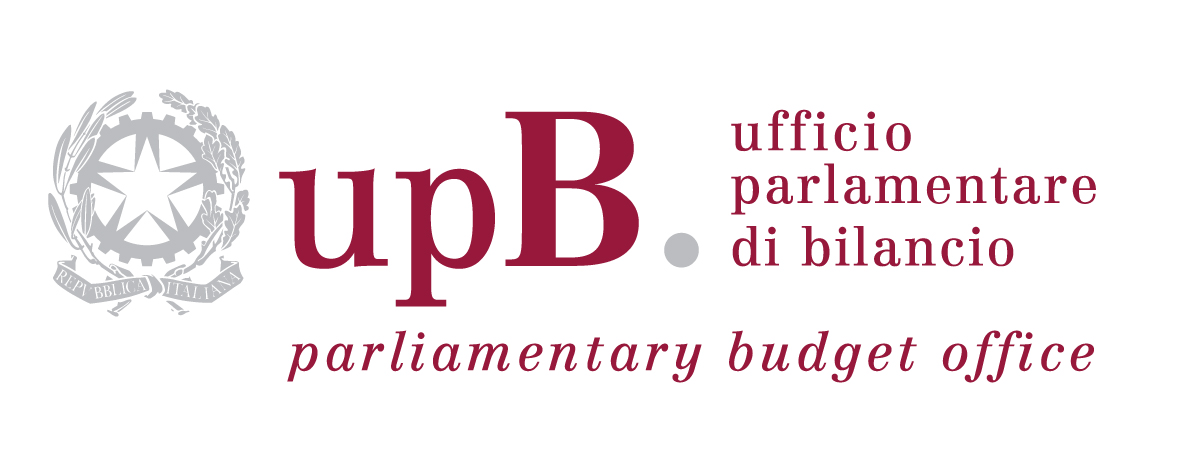Italy’s GDP estimates revised: 0.5 per cent for 2025 and 2026
based on second quarter data and the impact of the euro-dollar exchange rate
- Forecasts revised downwards by 0.1 per cent for this year and 0.2 per cent for next year
- Strong ‘implicit tariff’ on EU exports due to the appreciation of the euro
- Yield spreads between sovereign bonds in the euro area narrow
- European inflation in line with ECB target, Italy below 2 per cent
- Investment in Italy has recovered but risks remain due to uncertainty
- For growth in 2026, it is necessary that the NRRP projects are implemented on schedule
- The PBO uncertainty index deteriorated rapidly in the second quarter
- Savings propensity is holding back consumption, despite the positive employment trend
1st August 2025− In its August 2025 Economic outlook, the Parliamentary Budget Office (PBO) has revised its growth estimates for the Italian economy compared with last April, now forecasting growth at 0.5 per cent for both this year and 2026. The slight downward revisions (0.1 per cent for 2025 and 0.2 per cent for next year) are due to lower-than-expected GDP figures for the second quarter and the significant appreciation of the euro against the dollar. The risks to the forecasts are generally on the downside, due to protectionism and possible delays in the implementation of the National Recovery and Resilience Plan (NRRP).
This economic report does not take into account the effects of the EU-US agreement on 15 per cent tariffs, the specific details of which have yet to be clearly defined.
International economic situation: wars, US protectionism and a weak dollar increase uncertainty
On the international scene, the volatility of energy commodity markets caused by the conflicts in Ukraine and the Middle East and the intensification of US protectionism in the global trade arena (with details and impacts on the recent agreement with Europe still to be defined) are compounded by the euro-dollar exchange rate, which acts as an additional ‘implicit tariff’ on European exports. The outlook for trade between countries is worsening, leading the International Monetary Fund to indicate a slowdown in world trade in both 2025 and 2026.
Inflation in the euro area is gradually returning to 2.0 per cent in June, in line with the European Central Bank (ECB) target. Against a highly uncertain global scenario, central banks are maintaining a cautious stance on monetary easing. The weakening of the dollar in the first half of 2025 was associated with capital movements towards Europe, leading to a narrowing of yield spreads between euro area sovereign bonds, including the BTP-Bund spread, which fell below 90 basis points last month.
Italian economy: second quarter of the year sees lower growth and confidence, but investment holds up
The Italian economy fell in the second quarter by 0.1 per cent (from 0.3 per cent in the previous quarter); the negative contribution of foreign demand was more than offset by the increase in consumer spending and gross investment. Private consumption was supported by the consolidation of the labour market, but the PBO uncertainty indicator deteriorated rapidly in the second quarter, and household purchasing intentions are cautious; the propensity to save stands at around 9 per cent of disposable income, above pre-pandemic levels.
Investment in winter maintained the brisk pace seen in the latter part of 2024, rising by 1.6 per cent in the first quarter of 2025, yet the outlook for capital accumulation appears uncertain. Qualitative surveys conducted in the spring point to unfavourable conditions for investment; on the other hand, fewer firms report obstacles to production and, according to the PBO credit indicator, conditions for access to loans remain favourable.
Strong exports boosted GDP growth by 0.1 percentage points in the first quarter of 2025. However, the anticipation of exports to the United States ahead of the new tariffs meant that those exports were not realised in the second quarter, which recorded negative figures as a result.
Growth in Italy: the PBO revises its April forecasts
The PBO’s updated estimates see GDP growth prospects at 0.5 per cent in both 2025 and 2026, revising down its previous forecasts, made in April for the endorsement of the macroeconomic framework of the 2025 DFP, by 0.1 and 0.2 per cent respectively.
The growth estimates for 2025, although supported by the employment dynamics in a context of moderate inflation, incorporate the unexpected slowdown in GDP in the second quarter; the data, which are currently preliminary, were released by Istat in recent days, so other forecasters have not yet taken them into account.
The negative gap for 2026 compared to the April scenario, despite the expected strengthening of investments driven by the NRRP, reflects the deterioration in foreign trade, which has mainly been affected by the sharp appreciation of the euro, which reduces price competitiveness and slows net exports. Protectionist tensions remain high, although the forecasts do not yet take into account the impact of the recent US-EU agreement, the content and details of which are not yet clear and fully defined.
The outlook for Italy is positive on the employment front, with an average increase of 0.5 per cent in full-time equivalents (FTEs) expected in the two-year period 2025-26, incorporating a reduction in hours worked. Inflation, although rising moderately over the two-year forecast period, is expected to average 1.8 per cent, partly due to pressure from external factors.
Overall, the macroeconomic outlook for the Italian economy is mainly exposed to international downside risks. There are also significant factors of uncertainty within the country, primarily concerning the evolution of the NRRP and the implementation of NRRP projects within the planned timeframe.
